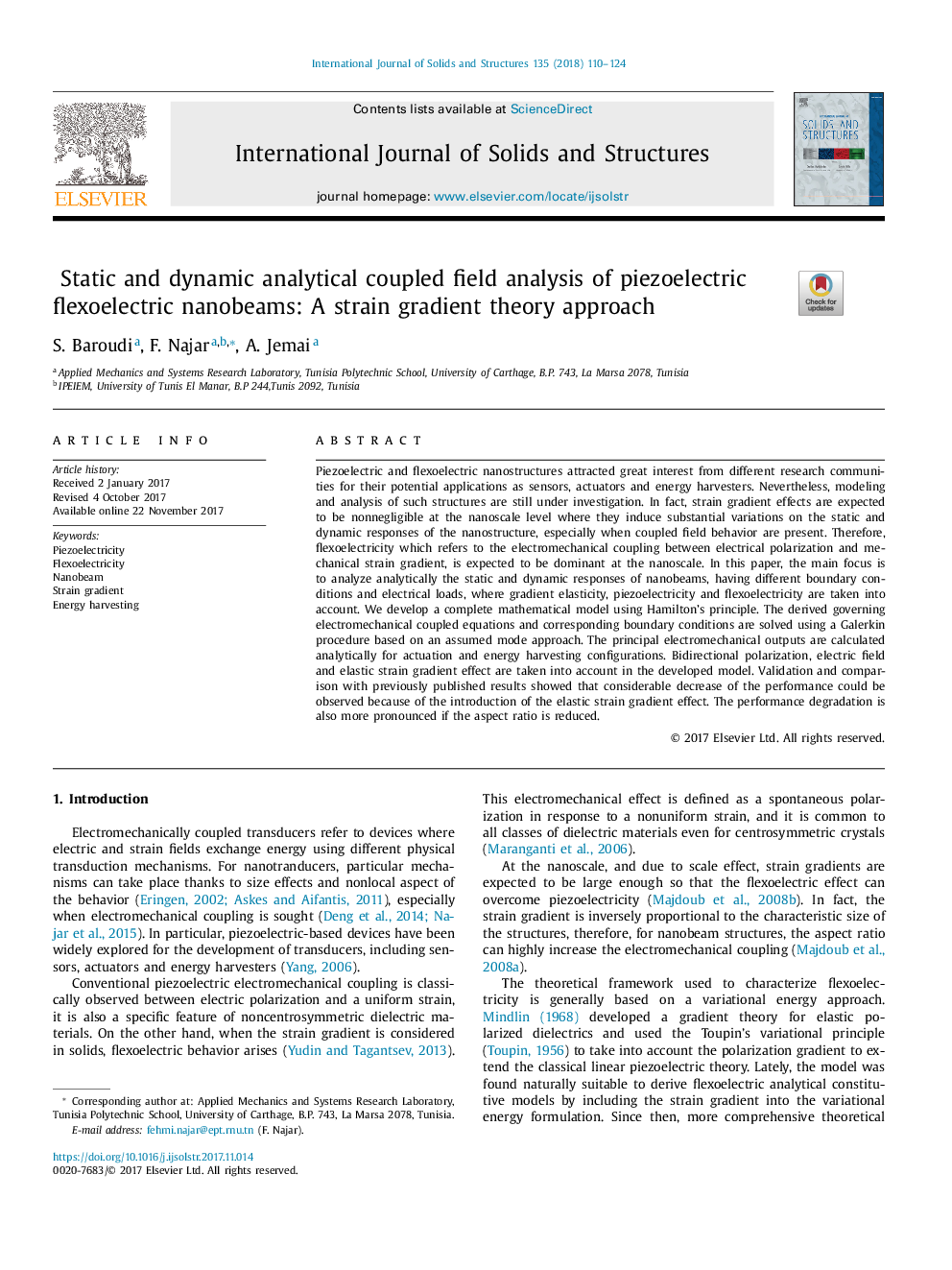| Article ID | Journal | Published Year | Pages | File Type |
|---|---|---|---|---|
| 6748413 | International Journal of Solids and Structures | 2018 | 15 Pages |
Abstract
Piezoelectric and flexoelectric nanostructures attracted great interest from different research communities for their potential applications as sensors, actuators and energy harvesters. Nevertheless, modeling and analysis of such structures are still under investigation. In fact, strain gradient effects are expected to be nonnegligible at the nanoscale level where they induce substantial variations on the static and dynamic responses of the nanostructure, especially when coupled field behavior are present. Therefore, flexoelectricity which refers to the electromechanical coupling between electrical polarization and mechanical strain gradient, is expected to be dominant at the nanoscale. In this paper, the main focus is to analyze analytically the static and dynamic responses of nanobeams, having different boundary conditions and electrical loads, where gradient elasticity, piezoelectricity and flexoelectricity are taken into account. We develop a complete mathematical model using Hamilton's principle. The derived governing electromechanical coupled equations and corresponding boundary conditions are solved using a Galerkin procedure based on an assumed mode approach. The principal electromechanical outputs are calculated analytically for actuation and energy harvesting configurations. Bidirectional polarization, electric field and elastic strain gradient effect are taken into account in the developed model. Validation and comparison with previously published results showed that considerable decrease of the performance could be observed because of the introduction of the elastic strain gradient effect. The performance degradation is also more pronounced if the aspect ratio is reduced.
Related Topics
Physical Sciences and Engineering
Engineering
Civil and Structural Engineering
Authors
S. Baroudi, F. Najar, A. Jemai,
